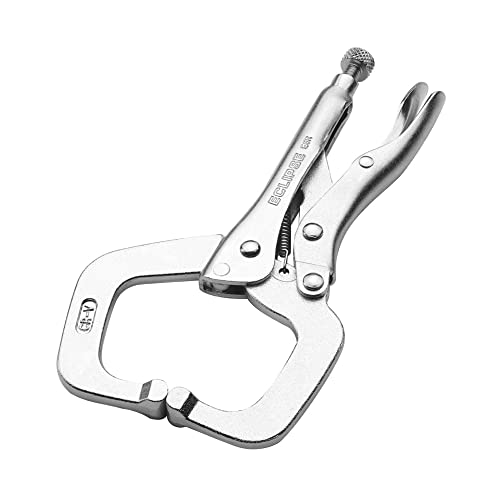Understanding Clamps: Regular Clamp Vs C-Clamp
Clamps are an essential tool in any workshop or DIY project, and they come in a variety of shapes and sizes. When it comes to clamps, two of the most popular options are regular clamps and C-clamps. While they may seem similar at first glance, there are some key differences between them.
C-Clamp: What It Is and How It Works
C-clamps are named so because of their resemblance to the letter “C.” They consist of two arms, one of which is shaped like a hook and the other like a bar. These two arms are brought together with a threaded screw, which allows you to adjust the clamp’s tightness.
C-clamps are often used in woodworking, metalworking, and welding to hold objects firmly in place. Their unique design makes them ideal for clamping together thick materials, and they are often used in conjunction with other clamps for maximum stability.
Regular Clamp: What It Is and How It Works
Regular clamps, on the other hand, come in a variety of shapes and sizes, but they all work on the same basic principle. They consist of two jaws, one of which is stationary and the other of which is adjustable. The adjustable jaw is brought closer to the stationary jaw using a screw mechanism, which allows you to adjust the clamp’s tightness.
Regular clamps are used for a variety of applications, but they are most commonly used in woodworking to hold pieces of wood together while glue dries. They are also commonly used in metalworking and welding, where they are used to hold materials together while they are being cut, drilled, or welded.
The Key Differences Between Regular Clamp and C-Clamp
While both regular clamps and C-clamps serve the same basic purpose, there are some key differences between them that make each type more suitable for certain applications. The main differences include:
- C-clamps have a unique “C” shape that makes them ideal for clamping thicker materials, while regular clamps can be used on materials of varying thickness.
- Regular clamps are usually more compact and easier to use than C-clamps, which can be large and unwieldy.
- C-clamps are often used in conjunction with other clamps for maximum stability, while regular clamps can be used on their own.
Which Clamp Should You Use?
Choosing between a regular clamp and a C-clamp largely depends on the application. If you need to clamp together thick materials or materials that require a lot of force, a C-clamp is likely the best choice. If you’re working with thinner materials, a regular clamp might be more suitable. Ultimately, it’s always a good idea to have a variety of clamps on hand to ensure you have the right tool for any job.






